Kazakhstan fell into this trap in the period 2011-2014, when the level of GDP per capita halted in the range of $ 8-14 thousand (at par) and stopped growing steadily. So, only at the end of 2016, after the devaluation in August 2015, Kazakhstan's per capita GDP decreased by half (to $ 7.1 thousand), under the condition that economic growth slowed down almost twice four years earlier. "Kursiv" investigates what needs to be done to get out of this situation and what role Development Bank of Kazakhstan plays in this process.
What to do
The set of tools for overcoming the "middle income trap" includes, among others, the search for new development drivers and diversification of the economy with the creation of export-oriented industries.
The diversification of the national economy in the practice of most developing countries is, on the one hand, improving regulatory mechanisms and creating a predictable regulatory environment through legislation and law enforcement practices, and on the other, direct government participation through increasing access to financing for private projects in priority sectors. For Kazakhstan, such sectors are not only high-tech microelectronics and renewable energy sources, but also industries that provide the second and third processing of raw materials - metallurgy, chemistry and petrochemistry, food industry.
In May 2021, it will be 20 years since Development Bank of Kazakhstan (DBK) solves the tasks of diversifying the economy.
DBK. The beginning

The Law "On Development Bank of Kazakhstan" was issued on April 25, 2001, but the bank became an active player in the financial sector of the republic after the launch of the Strategy for industrial and innovative development for 2003-2015.
Although DBK is not mentioned in the document, the new development institution, which is part of the state Sustainable Development Fund Kazyna, was tasked with supporting corporate leaders - large industrial projects that ensure productivity and export growth in priority sectors. Traditionally, the government of the Republic of Kazakhstan has classified the manufacturing industry and infrastructure (including telecommunications and communications) as such.
In the updated industrialization program (SPFIID for 2010-2014), DBK was assigned the role of an investor with a financing volume of 685 billion tenge. The program of the next five-year industrialization plan (SPIID for 2015-2019) fixed the bank's role as a lender of "large projects with high export potential, as well as lending for export operations of processed goods."with the amount of financing 356 billion tenge.
Over the past 20 years, the emphasis of the state's industrial policy has changed several times, but the central role of DBK in supporting large projects in the non-resource sector has remained unchanged. In the next industrialization program (SPIID for 2020-2025) DBK is assigned the function of a financial institution that provides long-term concessional financing “by mixing budget and commercial funds for a period of up to 20 years with the own participation of the enterprise at least 20% of the project amount”.
It is not by chance that the volume of exports have become one of the key indicators that DBK's management is guided by when determining the effectiveness of the project. These indicators are recorded in the industrialization programs of Kazakhstan.
DBK and industrialization
Over the past 20 years, Development Bank of Kazakhstan has supported projects in non-resource sectors of the economy through four channels:
- lending to investment projects;
- financing of export operations;
- lending to second-tier banks for the implementation of state programs (for example, car loan programs);
- provision of financial leasing (through a subsidiary structure "DBK-Leasing", now - Industrial Development Fund).
Since the eastablishment of DBK, 149 investment projects with a total value of 9.8 trillion tenge have been approved and financed, the participation of DBK is 4.7 trillion tenge, as well as 106 export operations wborth 0.8 trillion tenge, the Bank's participation is 0.52 trillion tenge. The total volume of financed projects and investment programs since the beginning of the activity amounted to 3 669.6 billion tenge. The activity of DBK in the field of lending is evidenced by the fact that the volume of direct loans to the bank's clients consistently exceeds the portfolio of STBs in the manufacturing industry - the main sector in terms of DBK's goals.
The situation reflects distortions in the economy of the Republic of Kazakhstan. We remind that DBK is a bank that finances large non-resource projects. Second-tier banks of Kazakhstan often cannot afford to accumulate funds sufficient for the implementation of large and long-term industrial projects.

The difficulty for second-tier banks lies in working with collateral and not always a sufficient level of business orientation of the management involved in the implementation. The resources and profile of DBK, as well as a long path of trial and error, allowed the development institute to concentrate competencies unique by the standards of the Republic of Kazakhstan in the implementation of non-resource projects at the national level.
As a result, by the end of 2020, the total volume of DBK assets associated with supporting the non-resource economy of the Republic of Kazakhstan amounted to 2.3 trillion tenge, or about 3.3% of GDP. The average growth rate of DBK's portfolio over the past 10 years is 22.7% (CAGR).
The structure of the supported projects reflects the tasks of DBK as the main financial institution for industrialization: about 63% of the total volume of loans was provided to manufacturing industries, including metallurgy, chemical industry, oil refining, food industry, and production of building materials.

The influence of DBK on the manufacturing industry in the last 10 years is enormous. With the participation of the bank, all key large projects of Kazakhstan industrialization have been implemented: the construction of two stages of the Kazakhstan Electrolysis Plant (KEP; project cost - $ 1 billion, DBK's share in financing - 39%), expansion of high-carbon ferrochrome production at the Aktobe Ferroalloy Plant of TNC Kazchrome ( cost - $ 843 million; DBK's share - 42%), construction of the Aktobe rail and beam plant (cost - $ 407 million; DBK's share (weighted in tenge) - 75%), construction of a ferrosilicon production plant of YDD Corporation (cost - 37 billion tenge; DBK's share - 66%).
“The bank has organized unique deals,” notes the chairman of the Management Board of DBK Abay Sarkulov. - These are the projects of KAZ Minerals, TNC Kazchrome, Kazakhstan Electrolysis Plant, Zhairem MPP, QazCarbon, ferrosilicon production plant of YDD Corporation. This project, focused on the global market, is highly competitive due to relatively low capital and operating costs."

The result of the implementation of these projects was, among other things, an increase in the export of primary aluminum by 28%, ferrochrome - by 11.2%, ferrosilicon - 25 times (2020 to 2010).

In petrochemistry, DBK financed the modernization of the Atyrau, Pavlodar and Shymkent oil refineries, as well as the "Condensate" refinery plant. The total cost of all projects implemented with the participation of DBK at these enterprises amounted to 2.5 trillion tenge (weighted in tenge), the share of DBK's participation is 47%.
“We have provided financing to our three oil refineries, to date they have completed in full their modernization, as a result of which the problem of shortage in the domestic market has been solved, the needs of the population and business are fully provided with Kazakhstani high-octane gasoline, and there is an opportunity to export fuel,” summed up Abay Sarkulov.
The perimeter of DBK support also includes large projects in the agro-industrial complex. “The Government of the Republic of Kazakhstan sets the task of meeting internal needs for socially significant products, and poultry meat is also included in this basket. We have set a goal - to close this deficit. The capacities of the two phases of the Makinsk poultry farm launched into production (project cost - 52 billion tenge, DBK's share - 58%) will cover consumption in the market by 22%, and we expect that in 2022 we will start another similar project, but this time in the southern regions of Kazakhstan", - explains the chairman of the Management Board of DBK.

Throughout its history, DBK has actively participated in greenfields - construction from scratch: in the structure of supported projects in terms of the total cost of financing, about 57% of DBK's loans were directed to the construction of new facilities, 39% - to modernize production facilities and 4% - to replenish working capital.
The focus on export-oriented industries did not prevent DBK from financing projects aimed at the domestic market - 44% of the funds were spent on them; projects aimed at both the domestic and foreign markets accumulated 39%, exclusively for export - 17%.

Formally, loans to airports and tourism projects, for which DBK are periodically criticized, can also be classified as export-oriented projects: inbound tourism is the export of services, and airports, hotels and tourist facilities are elements of the tourism infrastructure that determine its quality.
Closer to the market

The future of DBK depends on the state policy of industrialization. According to the bank's strategy that is in effect until 2023, it must increase investments in the creation of manufacturing industries and industrial infrastructure (up to 4.4 trillion tenge), maintain the high quality of the portfolio, non-state sources of borrowing and the share of private companies in the structure of borrowers.
The vast majority of DBK's loans were issued to private companies operating on the open market. A period of more active interaction with the private sector - enterprises and second-tier banks is coming. At the same time, the growing activity of DBK should not lead to market distortions.
Sergey Domnin












